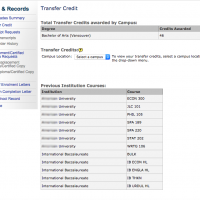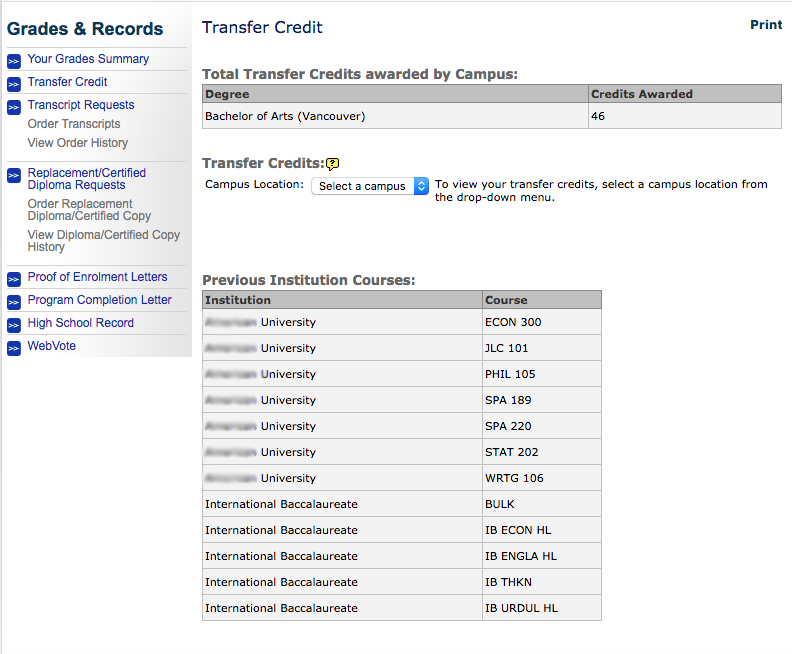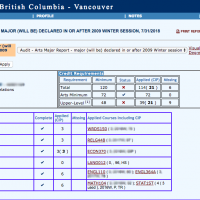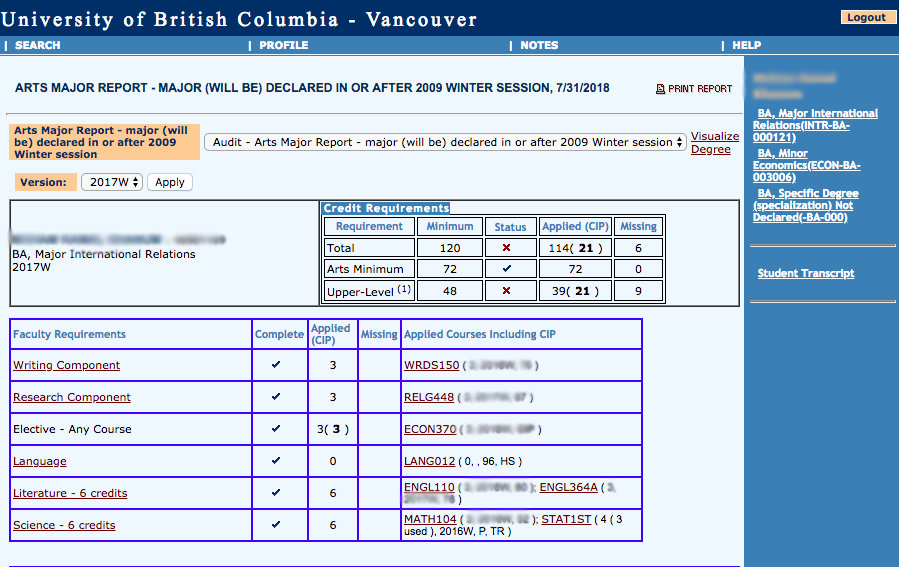Getting admitted to UBC can feel like one long marathon. But congrats—you’re now past the finish line!
As you celebrate this milestone and take the next step in your UBC journey, remember that you’re bringing a diverse set of accomplishments with you—and these could take the form of transfer credits.
What are transfer credits?
Transfer credits are basically any credits applied towards your degree at UBC for prior courses taken outside of UBC that have not counted towards another degree.
For example, if you took International Baccalaureate (IB), Advanced Placement (AP), or British-patterned A-levels coursework in high school that meet a minimum exam result, you would likely have transfer credits that are either specific to a UBC course, or are general credits within a certain discipline (e.g. BIOL 1st, ENGL 1st).
If you’re joining UBC as a transfer student, your prior studies at another institution could also result in transfer credits.
As long as your official exam results and final transcripts have been sent to UBC, you should have your transfer credits updated to your UBC record (in the Student Service Centre) as soon as possible.
Why should I pursue getting transfer credits?
Every course costs time and money. Making the most of your transfer credits allows you to save on both to use elsewhere—for example, exploring elective courses that interest you, or perhaps saving up for an exchange trip.
Personally, when I transferred to UBC, I pursued getting transfer credits for my high school IB courses, as well as courses taken at my previous university. Since I was changing my major, getting transfer credits helped to satisfy elective and prerequisite requirements, which in turn gave me more room to explore other courses as part of my new degree.
I should mention that I also ended up saving around $15,000 in international tuition fees when I applied my previous coursework to my new major!
Lastly, as a transfer student, it was also important for me to stay on track timewise. Transfer credits allowed me to truly continue my studies—because nothing you learn is ever wasted.
How do I get transfer credits?
Below are 3 proactive steps you can take to maximize your transfer credits:
1. Check the Student Service Centre (SSC)
Start with scanning your SSC for a summary of transfer credits already granted (a sample is shown below—click to expand).
-
You can check for what you are eligible to receive on the UBC Transfer Credit Search Tool, which lets you look up post-secondary transfer credits. (This search tool displays courses based on previously admitted transfer student records, so understandably does not contain all possible courses offered elsewhere.)
-
If you came to UBC directly from high school, you can use UBC's first-year credit page to check for applicable transfer credits.
-
If you see a discrepancy from what you’re expecting or have questions about the transfer credits initially listed in your SSC, follow up with your Enrolment Services Advisor (not a faculty member). (For exchange credits, follow up with your Academic Advising office). In most cases, a detailed course syllabus from your prior institution is required for a review.
2. Reach out to your Academic Advisors
Just because a course is transferable does not necessarily mean it is applicable to your degree. When it comes to getting transfer credits applied to your degree, there are no hard-and-fast rules because everyone’s situation depends on their unique major and degree requirements.
Reach out to your faculty, departmental, and/or program Academic Advisors to discuss your individual case whenever you feel like there’s a chance you could get additional credit for previous coursework.
Additionally, if you're looking at requirements for a major or minor in the Academic Calendar and have further questions, your departmental/program advisor is a great resource, so be sure to reach out to them!
3. Get to know Degree Navigator
Throughout your degree, and especially if you are eligible for transfer credits, the SSC’s Degree Navigator can be a great resource to help you plan ahead. Depending on which program you’re in, this tool can give you access to your degree report based on your faculty, major, and (if applicable) minor program.
Degree Navigator shows all of your courses (from other institutions or taken at UBC) and how they would apply to your degree requirements. It also tracks your progress towards graduation by showing green check marks in front of completed requirements, and red Xs in front of missing credits.
If you expand the sample SSC screenshot below, you can view codes like ‘TR’ or ‘HS’, which indicate credits you have brought to UBC, and those that have been applied to your degree program requirements.
If you’re ever unsure about how to interpret the information in Degree Navigator (or don’t have access to it), contact your Academic Advisor for help. Some faculties have also prepared online tutorials for how to use the DN tool, so check them out below:
EXCEPTIONS:
Degree Navigator supports students in most 2nd to 4th year undergraduate programs, except for the following:
-
Bachelor of Commerce program (use the Sauder Degree Credit Check form instead)
-
Bachelor of Science in Integrated Sciences
-
Bachelor of Science, Honours in Biotechnology
-
Minors in the Faculty of Science
-
Double majors
-
Dual degrees in the School of Music, and the Faculties of Arts, Science, and Education
-
Second degree programs for prior degree holders
Science students: Note that Degree Navigator is a handy tool but doesn’t serve as the “definitive” answer on your degree requirements for graduation. If you have reviewed your Degree Navigator report and have questions or see something amiss, please connect with Science Advising to discuss further and confirm your progress towards graduation.
Remember: what you did before UBC counts—from high school or another college/university—and maximizing transfer credits is one way to recognize your past accomplishments!
It might take a little time and proactive work on your part to get transfer credits applied to your degree, but trust me, it’ll be worth it in the end.







